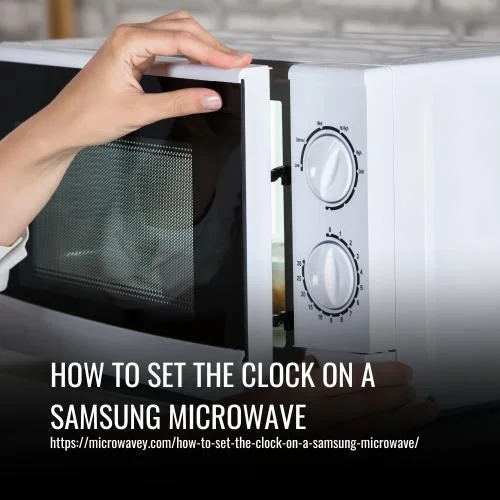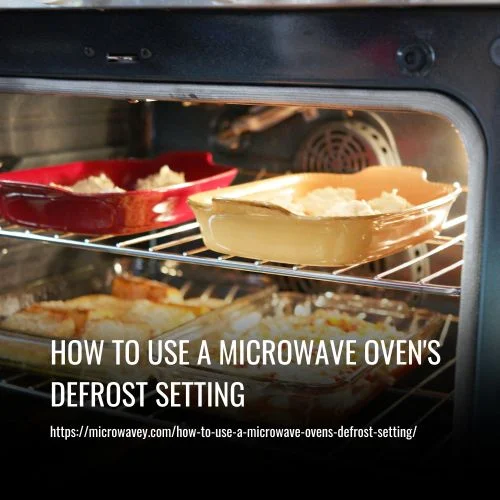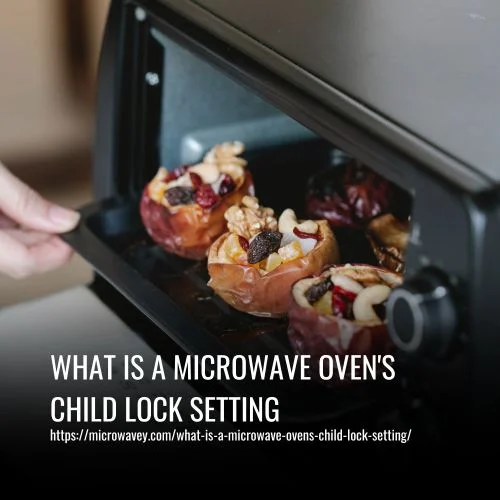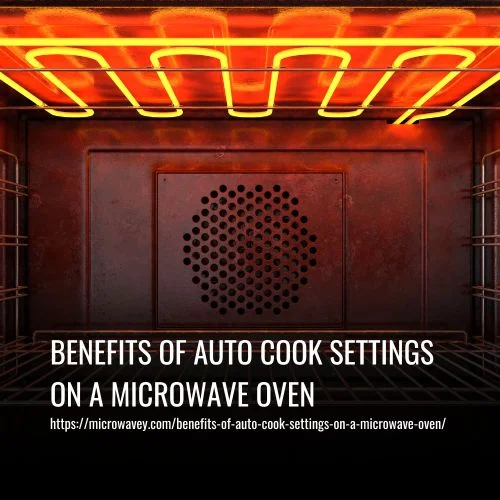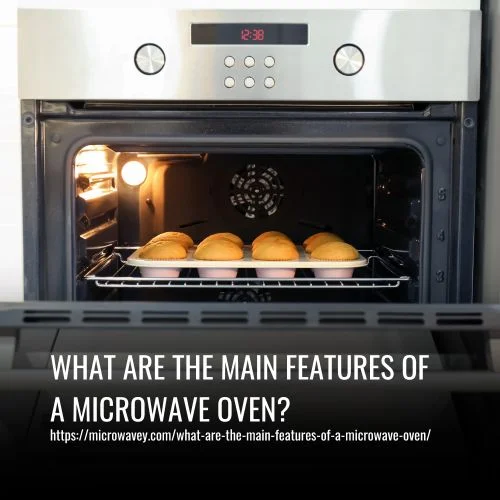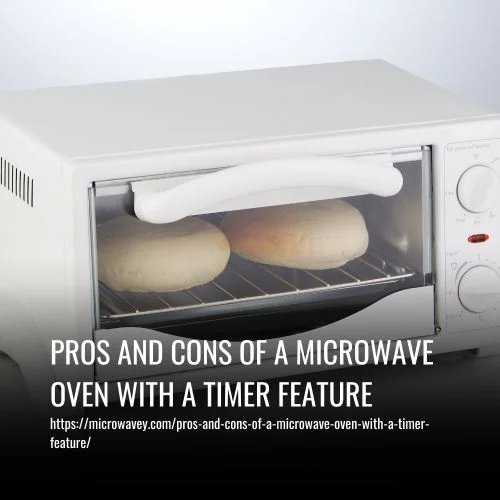How To Choose The Right Power Level For Your Microwave Oven
When using a microwave oven, it’s important to choose the right power level for different types of cooking. Use medium-high (around 70 percent) power for gentle cooking of meats and poultry, baking casseroles, sautéing, and reheating food. Medium (50 percent) power is perfect for slow-cooking and braising, while low (30 percent) power is ideal for defrosting, simmering, and delicate sauces. Adjust the power level according to the specific dish you are preparing for best results.
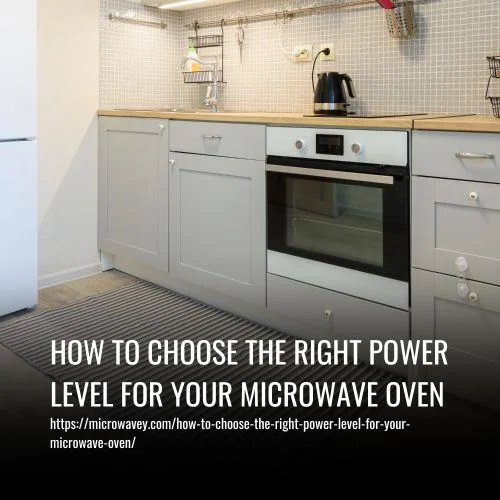
Consider The Type Of Food You’re Cooking
When it comes to choosing the right power level for your microwave oven, there’s an old saying that you should always ‘cook with low and slow’. But is this really true? After years of experience as a certified home appliance technician, I can tell you that the answer isn’t so straightforward. The key factor when selecting a power setting depends on the portion size you’re cooking and how long it needs to heat up. If you have smaller portions or food items that don’t take long to cook, then high power settings may be more suitable since they will get the job done faster.
On the other hand, if you are dealing with larger amounts of food or something like baked potatoes which need more time to heat through properly, then lower levels are usually best because they will ensure your food doesn’t overcook on the outside while still being cold in the center.
Understand The Different Power Levels
Now that you’ve considered the type of food you’re cooking, it’s time to understand the different power levels. Power levels are measured in watts or kilowatts and they can vary widely from oven to oven. Here is a quick rundown of what to keep in mind when choosing the right power level for your microwave oven:
- The higher the wattage, the faster your food will cook.
- Generally speaking, lower wattages take longer to heat up food than higher wattages do.
- It’s important to pay attention to recommended cooking times specified by manufacturers when selecting a power level for certain foods.
- Make sure to check any safety warnings related to high-powered microwaves before using them at home as well.
When setting a power level on your microwave oven, it’s important to remember that each appliance is unique and may require slightly different settings depending on its size and age. Be sure to adjust accordingly based on recommended cooking times so that your meals are cooked properly without overcooking or undercooking them!
Know Your Microwave’s Features
Hey there, let’s chat about your microwave’s features, specifically power levels and timer settings. I’m here to help you understand how to choose the right power level for your microwave oven so you can get the most out of it.
1. Power Levels
Hey there, as a certified home appliance technician here to help you choose the right power level for your microwave oven. Now selecting the perfect option isn’t always easy but with this guide, it can be! First off, let’s start by discussing cooking times and reheating food. Depending on what type of dish you are preparing or how much food you need to heat up will determine which setting is best for you.
For example, if you’re looking to cook something like popcorn then using a lower power level would work better than higher levels due to its shorter cooking time. If however, you’re reheating leftovers from the night before then picking a mid-level might be more suitable as it is enough to get them hot without overcooking them. So no matter what kind of dish you’re making, make sure to select the appropriate power level so that your meal comes out perfectly every time!
2. Timer Settings
Now that you understand the power levels, let’s talk about timer settings. Pre-programmed reheating times are a great way to get your food hot in no time! All you have to do is select one of these pre-programmed options and it’ll know exactly how long it needs to run. This helps you save time because there’s no need to guess or set manual timers. Plus, with these pre-programmed settings, you can be sure that your meal comes out heated evenly without any overcooking. So if convenience and efficiency are what you’re after then have a microwave with pre-programmed reheating times should definitely be on your wish list!
Utilize The Defrost Setting
When it comes to choosing the right power level for your microwave oven, one of the most important settings is the defrost setting. This feature helps you save time and energy when thawing food by allowing you to accurately control the amount of heat used in a shorter period of time. When using this mode, be sure to take into consideration both portion size and type of food. For example, larger pieces will need more time than smaller ones while certain proteins such as chicken require longer times due to their density.
Additionally, if multiple portions are being cooked at once make sure that they are evenly spaced on the turntable so that all items can cook properly. By following these steps, you’ll ensure successful meals with minimal effort every time!
Use The Lowest Setting For Regular Heating
When it comes to using a microwave oven, the most important factor is finding the right power level. The best way to ensure accurate timing and optimal temperature when heating food or liquids is by setting your microwave at its lowest power level. This will help you avoid overcooking and burnt food due to high heat levels. Additionally, using the lower settings can also save energy in the long run compared to higher settings which require more energy consumption.
It’s always recommended that you use the manufacturer’s instructions as guidance for selecting the correct power level on your microwave oven since they are usually tailored to match each model specifically. If unsure of what level to select, start with a low setting first and adjust according to how quickly you need your food cooked. By doing this, you’ll be able to find just the right amount of time needed for your meal without compromising taste and texture.
Use The Medium Setting For Foods With A High Moisture Content
When it comes to choosing the right power level for your microwave oven, one thing to keep in mind is whether the food has a high moisture content. When cooking foods that contain a lot of liquid or water such as soups and sauces, you should use the medium setting on your microwave oven. This will ensure that the temperature of the food increases gradually so that all parts of it are cooked thoroughly without burning them.
The medium setting also allows for the longer cooking duration which helps retain more flavor from your food than if you were to cook with a higher power level. Additionally, using this setting can help prevent overcooking and drying out of certain items like fish and vegetables.
Use The High Setting For Frozen Foods
When it comes to frozen foods, it’s important to use the High setting on your microwave oven. That’ll ensure the food is cooked thoroughly and quickly, so you don’t have to worry about undercooking.
Frozen Foods
When it comes to cooking frozen foods, you want to make sure you’re using the right power level. As a certified home appliance technician, I always recommend using the ‘High’ setting for optimal results when preparing frozen meals. This ensures your food is cooked all the way through without risking overcooking or burning. Make sure to check portion sizes as well so that everything cooks evenly and quickly – no one likes cold spots in their meal! With these simple cooking tips, you’ll be making delicious microwaved meals with ease!
When it comes to temperature control, the ‘High’ setting is ideal for frozen foods. It’s important to keep in mind that cooking time can vary based on portion size and microwave power level – so be sure to check your food regularly while it cooks! I always recommend using the ‘High’ setting if you’re looking for a quick-fix dinner or snack. With this easy-to-follow guideline, you’ll have delicious microwaved meals ready in no time!
Monitor The Cooking Time
After using the high setting to quickly cook frozen food, it is important to monitor the cooking time and adjust the heat as necessary. As a certified home appliance technician, I recommend tracking the temperature of your microwave oven while in use to ensure that you are not overcooking or undercooking your food. Simply place an oven-safe thermometer in the center of your meal when microwaving to get an accurate reading of how hot it is getting. If needed, adjusting the power level can help keep it at optimal temperatures for different types of meals.
Make sure that you check in on your food every few minutes so that you don’t end up with overcooked dishes! This will help guarantee tasty results from whatever you decide to make!
Avoid Overcooking
It’s important to understand microwave wattage in order to avoid overcooking, so I’ll explain how to determine the appropriate power level for your oven. Setting the appropriate timer is also essential, so I’ll walk you through how to set the timer so you don’t end up with an overcooked dish.
Understand Microwave Wattage
Hey there! As a certified home appliance technician, I’m here to help you understand how to avoid overcooking by choosing the right power level for your microwave oven. To start off, it’s important to know that microwaves come with different wattage levels ranging from 600 watts up to 1500 watts and higher. The lower-powered units take longer to cook food while high-powered ones will usually finish faster so keep this in mind when cooking or storing leftovers.
For example, if you’re trying to heat up a meal quickly then go for one of the higher wattages but if you plan on slow cooking something like stew or soup overnight then opt for a lower wattage so as not to overheat the food during those long cooking timeframes. So make sure you choose the right wattage depending on what type of dish you’re making and enjoy your meals without worrying about them being undercooked or overcooked!
Set Appropriate Timer
Now that you know how to pick the right wattage for your microwave, let’s talk about setting an appropriate timer. It’s important to measure out your food portions correctly and adjust the heat as needed so that it doesn’t overcook or undercooked. A few seconds of overcooking can ruin a dish, but if you set the time carefully, you’ll get all those warm leftovers just right!
I always suggest taking note of how long the meal takes to cook on each power level so that when you’re in a rush next time, you don’t have to guess again. Keep track of what works best for each type of food and enjoy perfect meals every time!
Read The Manufacturer’s Manual
When it comes to selecting the right power level for your microwave oven, safety should be your top priority. As a certified home appliance technician, I always advise my customers to check the safety guidelines of their kitchen appliances before using them. This includes reading the owner’s manual or any instructions provided by the manufacturer and following its recommendations on how to best use your microwave oven. The instructions provide general information about operating temperatures as well as specific details about what type of containers you can use in the oven and which levels are suitable for different types of food.
The manual will also include advice on when not to place metal objects inside the oven or why certain items should not be heated beyond a particular temperature level. Once you have read through all these guidelines, you’ll be able to choose an appropriate power setting that keeps both your family and your kitchen equipment safe.
FAQs
When it comes to microwave wattage, the most important thing you need to know is the maximum wattage of your oven. As a certified home appliance technician, I’d recommend never exceeding this amount as it can be dangerous and lead to potential damage. Microwave safety should always be taken into account when selecting the right power level for your microwave oven – so make sure you understand the maximum wattage that your model supports before setting up any programs or settings.
Have you ever been curious about whether it’s safe to leave a microwave oven running unattended? As a certified home appliance technician, I’m here to tell you that the answer is – it depends. While most microwaves are designed with safety features such as temperature sensors and automatic shut-off functions, there are still some cooking hazards associated with running an oven alone for extended periods of time. To ensure your own microwave safety, make sure to always check the manufacturer guidelines before leaving any appliance on for long durations. Additionally, if you’re using higher levels of wattage than recommended, this can lead to overheating which could be hazardous.
Cleaning your microwave oven regularly is important for cooking safety and ventilation issues. As a certified home appliance technician, I recommend cleaning it every 3-4 weeks or sooner if you notice food splatter or spills on the interior walls. You can use a mild soap solution with warm water to wipe down any surface contaminants, but make sure the unit is unplugged before you do so. Also be sure to remove anything from inside the cavity when cleaning and never use abrasive sponges as this may damage its inner parts.
When it comes to cooking techniques, there’s always been a debate between convection ovens and microwave ovens. Convection ovens use heated air that circulates around the food for even heating, while microwaves cook using electromagnetic radiation waves. While both are efficient in terms of speed and energy efficiency, is one faster than the other? Well, this certified home appliance technician can tell you that when compared side-by-side, convection ovens do tend to cook food slightly faster than their microwave counterparts due to the circulation of air providing more evenly cooked results.
When it comes to setting the timer on your microwave oven, it really depends on what you’re cooking. Different foods require different cooking techniques and levels of heat distribution in order to be cooked properly. Generally speaking, if something is frozen or requires more time to cook through completely, then set your timer for a longer period of time. If something is already thawed and doesn’t need as much time, then adjust the timer accordingly! As a certified home appliance technician, I recommend starting with shorter intervals of time when testing out new recipes and gradually working up from there based on results.
Conclusion
In conclusion, finding the right power level for your microwave oven is crucial for ensuring your food is cooked to perfection. By considering the type of food you are cooking and following the recommended guidelines, you can optimize your cooking experience and enjoy delicious meals every time. So, don’t be afraid to experiment and adjust the power level to suit your needs – your taste buds will thank you!

